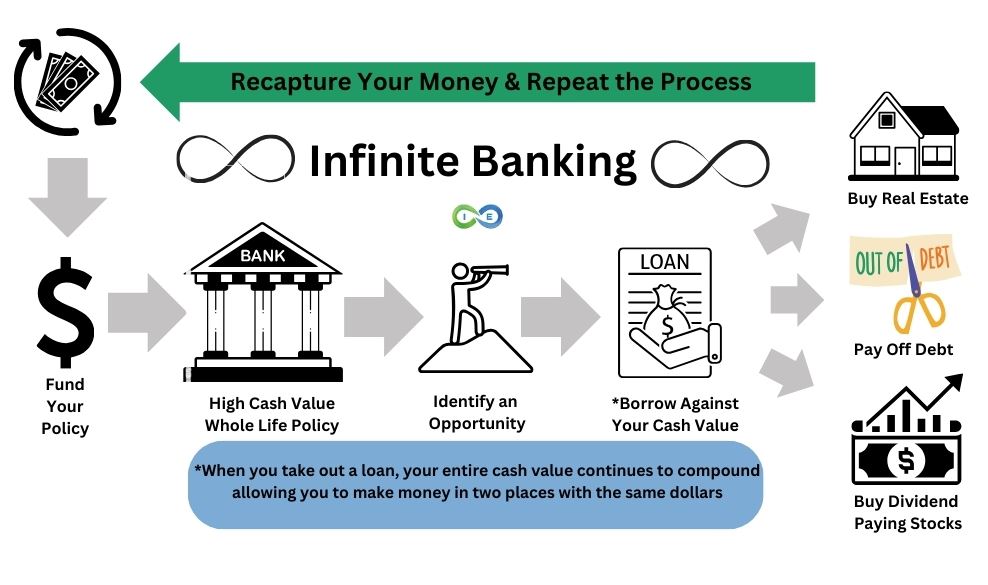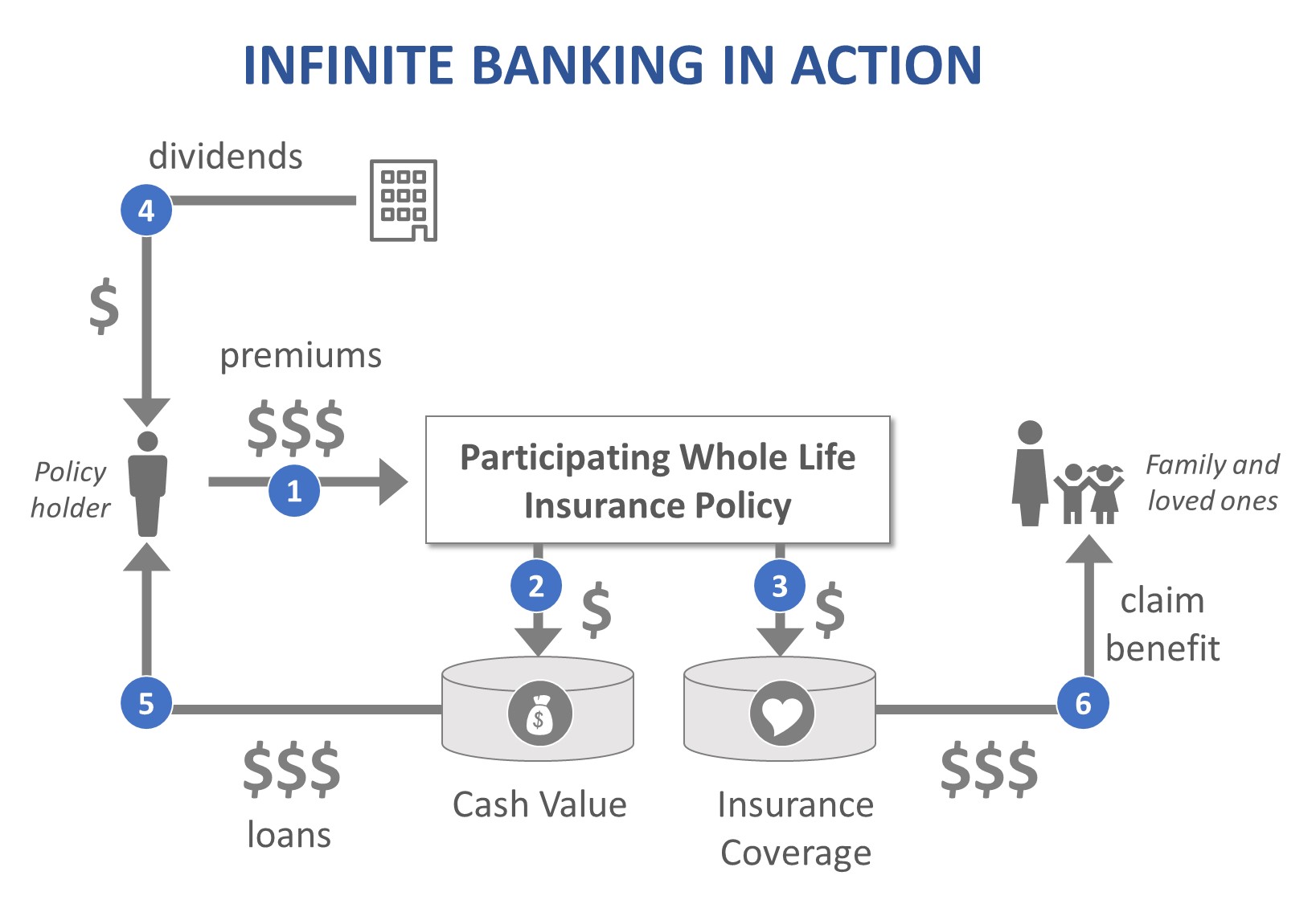All Categories
Featured
Table of Contents
Okay, to be reasonable you're truly "financial with an insurance provider" as opposed to "banking on yourself", but that principle is not as easy to offer. Why the term "infinite" financial? The idea is to have your cash working in multiple areas at the same time, instead of in a single area. It's a little bit like the concept of acquiring a home with money, then obtaining against your home and putting the cash to operate in one more financial investment.
Some people like to talk concerning the "speed of cash", which essentially indicates the very same thing. That does not imply there is absolutely nothing beneficial to this principle once you get past the advertising.
The whole life insurance policy market is tormented by extremely costly insurance policy, substantial compensations, dubious sales techniques, low prices of return, and badly enlightened customers and salesmen. If you desire to "Financial institution on Yourself", you're going to have to wade right into this industry and really buy whole life insurance coverage. There is no alternative.
The assurances integral in this item are essential to its feature. You can borrow against a lot of sorts of money value life insurance coverage, yet you should not "financial institution" with them. As you purchase an entire life insurance plan to "financial institution" with, bear in mind that this is an entirely separate section of your financial strategy from the life insurance area.
As you will see below, your "Infinite Banking" policy really is not going to reliably supply this essential economic feature. One more trouble with the reality that IB/BOY/LEAP counts, at its core, on a whole life plan is that it can make getting a plan troublesome for numerous of those interested in doing so.
Infinite Banking Spreadsheet
Hazardous leisure activities such as SCUBA diving, rock climbing, sky diving, or flying also do not blend well with life insurance coverage products. That may function out great, since the point of the policy is not the fatality benefit, yet bear in mind that getting a plan on small kids is a lot more expensive than it ought to be because they are normally underwritten at a "basic" price rather than a favored one.

The majority of plans are structured to do one of 2 points. The compensation on a whole life insurance coverage policy is 50-110% of the very first year's premium. In some cases plans are structured to take full advantage of the fatality advantage for the premiums paid.
With an IB/BOY/LEAP plan, your goal is not to maximize the survivor benefit per buck in costs paid. Your objective is to take full advantage of the cash money value per dollar in premium paid. The rate of return on the plan is extremely vital. Among the most effective means to make best use of that factor is to obtain as much money as feasible right into the policy.
The best way to improve the price of return of a plan is to have a reasonably tiny "base policy", and afterwards put more cash right into it with "paid-up enhancements". As opposed to asking "Just how little can I place in to obtain a particular survivor benefit?" the inquiry comes to be "Exactly how much can I lawfully put into the plan?" With more money in the policy, there is even more cash worth left after the expenses of the survivor benefit are paid.
A fringe benefit of a paid-up addition over a regular premium is that the commission rate is lower (like 3-4% as opposed to 50-110%) on paid-up enhancements than the base policy. The much less you pay in compensation, the higher your price of return. The price of return on your cash money worth is still mosting likely to be adverse for some time, like all cash worth insurance plan.
It is not interest-free. It may set you back as much as 8%. The majority of insurance provider only offer "straight acknowledgment" loans. With a straight acknowledgment funding, if you borrow out $50K, the reward price related to the cash money value each year only applies to the $150K left in the policy.
Rbc Visa Infinite Avion Online Banking
With a non-direct recognition finance, the company still pays the same reward, whether you have actually "obtained the cash out" (practically against) the policy or not. Crazy? Why would they do that? That understands? Yet they do. Frequently this attribute is coupled with some less beneficial aspect of the policy, such as a lower returns price than you might receive from a policy with straight recognition lendings (how to set up infinite banking).
The firms do not have a resource of magic free cash, so what they provide in one location in the plan should be extracted from one more area. However if it is drawn from an attribute you care less about and place into a feature you care extra about, that is a good idea for you.
There is one even more critical feature, generally called "wash financings". While it is wonderful to still have returns paid on money you have taken out of the plan, you still need to pay interest on that financing. If the returns rate is 4% and the car loan is billing 8%, you're not precisely coming out in advance.
With a laundry loan, your lending passion rate is the exact same as the returns price on the plan. So while you are paying 5% passion on the funding, that rate of interest is entirely offset by the 5% dividend on the funding. In that respect, it acts just like you took out the cash from a financial institution account.

5%-5% = 0%-0%. Without all 3 of these variables, this policy simply is not going to function really well for IB/BOY/LEAP. Virtually all of them stand to make money from you purchasing right into this idea.
There are numerous insurance coverage representatives speaking about IB/BOY/LEAP as a function of whole life who are not actually offering plans with the required functions to do it! The trouble is that those that know the concept best have a huge problem of interest and usually inflate the benefits of the idea (and the underlying plan).
Be Your Own Banker Whole Life Insurance
You must compare loaning versus your plan to taking out cash from your savings account. Return to the start. When you have nothing. No deposit. No cash in investments. No cash in cash money value life insurance policy. You are confronted with a selection. You can put the cash in the bank, you can invest it, or you can get an IB/BOY/LEAP policy.
It expands as the account pays passion. You pay taxes on the passion each year. When it comes time to acquire the watercraft, you take out the cash and purchase the boat. Then you can save some even more cash and placed it back in the banking account to begin to make passion again.
It expands throughout the years with resources gains, dividends, rents, etc. Some of that earnings is strained as you go along. When it comes time to get the watercraft, you offer the financial investment and pay taxes on your lengthy term resources gains. Then you can conserve some more cash and acquire some even more financial investments.
The cash money value not used to pay for insurance and compensations grows over the years at the returns rate without tax drag. It starts out with negative returns, however hopefully by year 5 approximately has actually recovered cost and is growing at the reward price. When you most likely to buy the boat, you borrow versus the plan tax-free.
Free Infinite Banking Videos
As you pay it back, the cash you paid back begins expanding once again at the dividend price. Those all job quite in a similar way and you can compare the after-tax rates of return. The fourth alternative, nevertheless, functions really in different ways. You do not save any type of cash nor get any sort of investment for years.
They run your credit rating and give you a finance. You pay rate of interest on the obtained money to the bank up until the loan is paid off.
Table of Contents
Latest Posts
Whole Life Insurance Banking
The Nelson Nash Institute
Life Insurance Banking
More
Latest Posts
Whole Life Insurance Banking
The Nelson Nash Institute
Life Insurance Banking